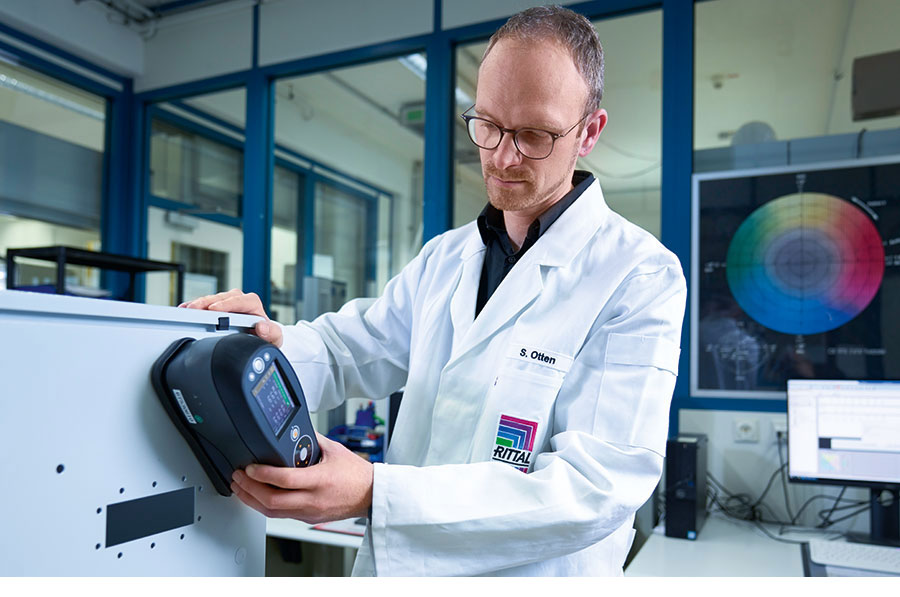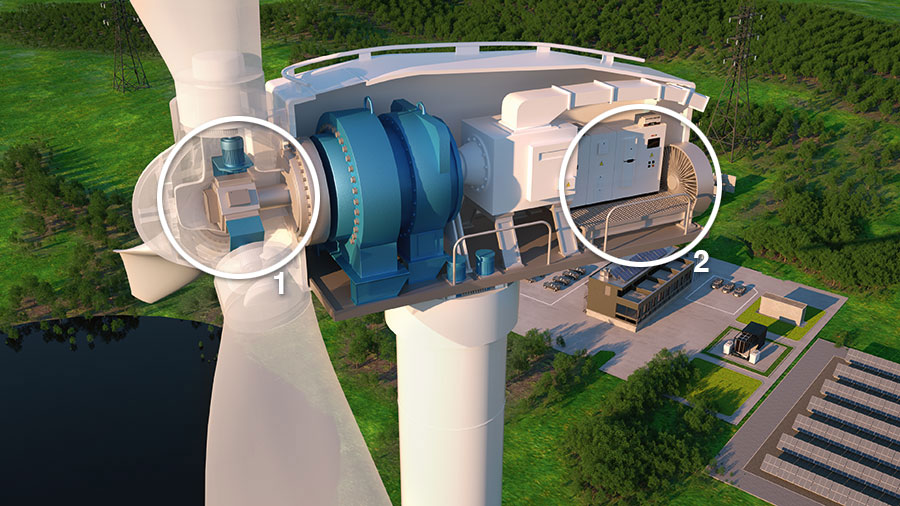Text Hans Robert Koch, Daniel Giebel ––– Photography
The dimensions of offshore wind turbines are impressive. They can be as tall as the Eiffel Tower, with each individual rotor blade the length of a football pitch. However, being operated in the open sea places huge demands on these megaturbines. The environmental conditions – waves, temperature fluctuations, sunlight, salty air and constant wind with the potential to develop into violent storms – pose many problems.
To withstand the salty sea air, for instance, the turbines require strong corrosion protection. Although the amount of salty air that gets into the turbines is minimised by overpressure systems, the salt is everywhere, getting into every nook and cranny and attacking metallic surfaces. Cost efficiency needs to be considered, too. Maintenance work on offshore turbines costs around ten times more than equivalent work on land. And if a fault occurs, short response times are vital to minimise the high losses caused by downtimes.
FIT FOR 25 YEARS AND MORE
Wind turbine suppliers offer a service that can extend over a period of 25 years and more. The enclosures used are therefore also expected to be durable, because they are not very easy to replace out at sea during servicing. This expectation ultimately serves as a basis for all enclosure specifications.
As part of its work with a leading wind turbine manufacturer, Rittal has drawn up a 70-page manual defining the global specifications for enclosures with C4-H corrosion protection. This manufacturer can thus show its customers what high-quality products are installed in the turbine – from enclosures and housings to accessories. “It’s a kind of joint technical certification for the end customers – we’re certifying the optimum protection of their products in this application,” says Raphael Görner, Executive Vice President BU Power & Energy Solutions at Rittal.
TRANSPARENCY AND A GLOBAL PRESENCE
For wind turbine manufacturers, a project of this kind is only successful if the supply chain is tailored to their particular needs. Transparency and being able to trust suppliers play a big role, and the global presence of Rittal is beneficial in this context. Flexibility is another must. If any changes to products are required or if defects occur, these must be dealt with rapidly.
Rittal understands the significance of stable processes and robust action plans in day-to-day international business. Sudden changes to enclosures – such as new drilled holes or cut-outs on the mounting plate – often have to be adopted straight away for the next orders. It may sound simple, but it is a complex undertaking when it comes to day-to-day operations. Everything has to be done very quickly – delays are not an option and everyone involved worldwide must be informed immediately. “It is therefore vital to be ‘Best in Class’ – not only in terms of quality, but also when it comes to global implementation and support,” explains Görner.
TESTED QUALITY DOWN TO THE SMALLEST NUTS AND BOLTS
From the hub and nacelle to the tower – to ensure only components that meet the requirements of the C3-H and C4-H corrosion protection classes are installed in today’s offshore wind turbines, Rittal has defined all the specifications down to the very last detail. These extremely detailed specifications not only cover enclosures based on the VX25 for use in turbines, but also compact enclosures, terminal boxes and every accessory – from the punched sections to seals, hinges and fasteners.
PROTECTION FOR ALMOST ANY SCENARIO
Increased corrosion protection requirements are not unique to offshore applications, though. The energy transition as a whole is creating an ever-growing number of applications that require outdoor systems, such as photovoltaic installations, charging infrastructure for electromobility and energy distribution stations. This also means tougher corrosion protection requirements for housings and enclosures. In this connection, plant engineering companies frequently have questions regarding DIN 12944 corrosion protection classes C1 to C5 (see interview). “The surface coating of the various Rittal enclosures offers reliable corrosion protection for almost any application, and protection up to C4-H will soon be available for the AX and VX in standard dimensions,” confirms Görner.


